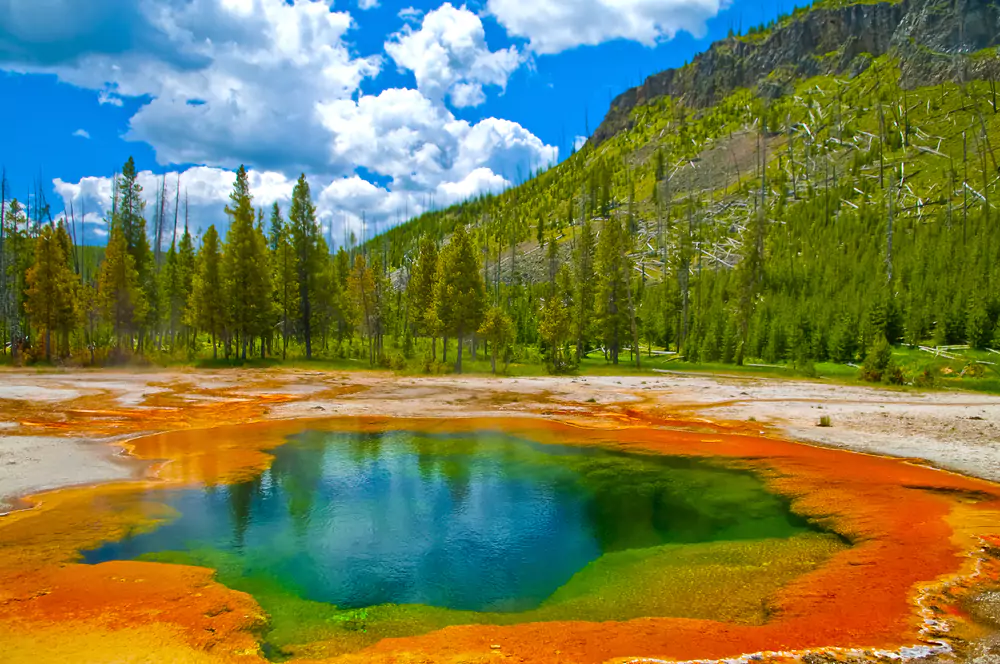Welcome Guide to Yellowstone, adventurous spirit, to our comprehensive guide to the all-year wonder that is Yellowstone National Park! Everyone has a favorite season, but when it comes to Yellowstone, Mother Nature doesn’t play favorites. That perfect time to visit? Well, it’s a bit like trying to pick the best slice of a pie made from every fruit under the sun – each one offers a unique, mouthwatering flavor.
Get ready to embrace the seasons in all their glory, because there’s no definitive “best time” to visit Yellowstone. Winter cloaks the park in a crystalline blanket of snow, transforming it into a pristine wonderland where geysers shoot steaming jets of water into the frosty air. Spring paints the landscape with vibrant splashes of color as wildflowers bloom and baby animals make their tentative first steps into the world. Summer offers sun-drenched days perfect for hiking and picnicking, while autumn drapes the park in a fiery array of reds, oranges, and yellows, setting the forests ablaze with color.

Each season in Yellowstone is a unique act in an ever-changing play, offering its own set of experiences that make it oh-so-special. So strap on your hiking boots, layer up your clothing, and grab your camera – your all-year adventure in Yellowstone is about to begin, and trust us, you won’t want to miss a single second.
1. Spring in Yellowstone
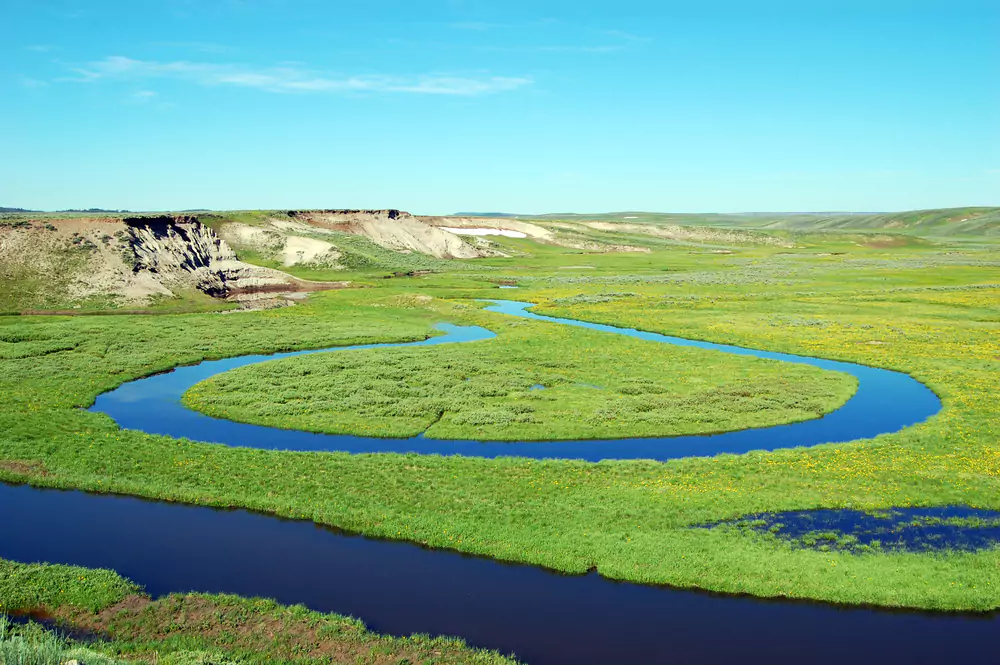
Spring in Yellowstone is a season of thrilling unpredictability, a time when Mother Nature can’t quite decide if she’s ready to shake off winter’s chill. As the park starts to thaw, it can be both a season of beauty and challenge.
Challenging Conditions
Spring ushers in the infamous ‘Mud Season’, a period when daytime temperatures start to rise, melting the snow and turning the hiking trails into muddy pathways. Here’s what you can expect:
- Cold and snowy: Don’t stow away your winter gear just yet! Despite the arrival of spring, Yellowstone can still be a winter wonderland. Snowfall is still a common occurrence in the early part of the season, and below-freezing temperatures are not unusual. Be sure to pack layers and warm clothing.
- Mud season: As the snow begins to melt, the ground, no longer frozen, can’t absorb the excess water, resulting in muddy conditions. Hiking trails can be treacherous, requiring waterproof shoes and a good sense of adventure.
Despite these conditions, spring in Yellowstone has its own charm. The park’s wildlife awakens from winter hibernation, with baby animals venturing out into the world, and the landscape bursts into a riot of colors as wildflowers start to bloom. It’s a dramatic transformation, one that Yellowstone.net states, “offers some of the park’s most incredible moments”.
And remember, every season in Yellowstone is a gift. It’s all about embracing the elements, whatever they may be. So, pack your sense of adventure (and a good, sturdy pair of boots), and get ready to experience the raw beauty of Yellowstone in spring!
Limited Accessibility and Closed Facilities
Spring is a bit of a tease in Yellowstone. It dangles the carrot of milder temperatures, only to pull it away with sudden snowfall and road closures. Some parts of the park may remain inaccessible due to snow or maintenance work.
- North Entrance at Gardiner: This is your best bet for a spring visit since it remains open year-round. You can find more details here.
- Other Entrances: The West, South, East, and Northeast entrances typically open in late April or early May, but exact dates vary each year. Check the NPS website for the most up-to-date information.
As you plan your trip, keep in mind that many facilities, like campgrounds and visitor centers, may be closed or have limited hours.
Upside: Minimal Tourism, Chance to See Baby Animals
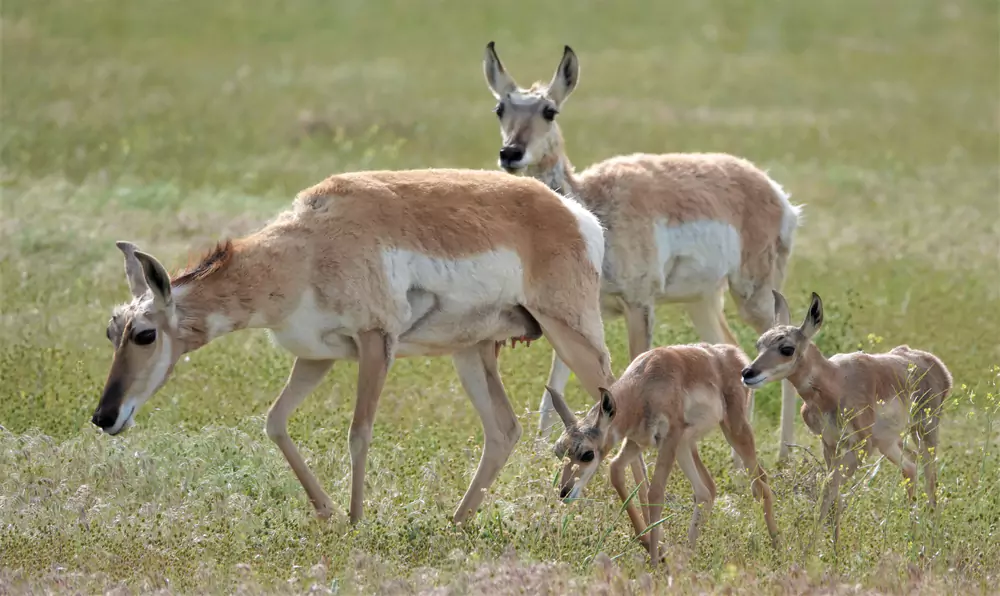
But hey, it’s not all doom and gloom! Spring is when Yellowstone lets its hair down and breathes a sigh of relief after the bustling winter. With fewer tourists around, you’ll have more of the park to yourself:
- Less crowded: Without the summer crowds, you can truly enjoy the serenity of Yellowstone. It’s just you, the wilderness, and the occasional bison crossing the road. Bliss!
- Baby Animals: It’s baby season in Yellowstone! Keep your eyes peeled for calves, cubs, and other adorable additions to Yellowstone’s wildlife families. Remember to keep a safe distance, though. Mama Bear isn’t particularly fond of paparazzi.
Pro-tip: Early morning and late afternoon are the best times to spot wildlife. Binoculars are a must!
Spring in Yellowstone is a rollercoaster ride, full of surprises at every turn. It’s a time to celebrate the resilience of life, to marvel at the raw beauty of nature, and to remember that even the muddiest paths can lead to the most beautiful places. So, pull on your boots, it’s time to get a little mud on the tires! Remember folks, adventure isn’t just about perfect sunny days, sometimes it’s about dancing in the rain…or in this case, trekking through the mud.
2. Summer in Yellowstone
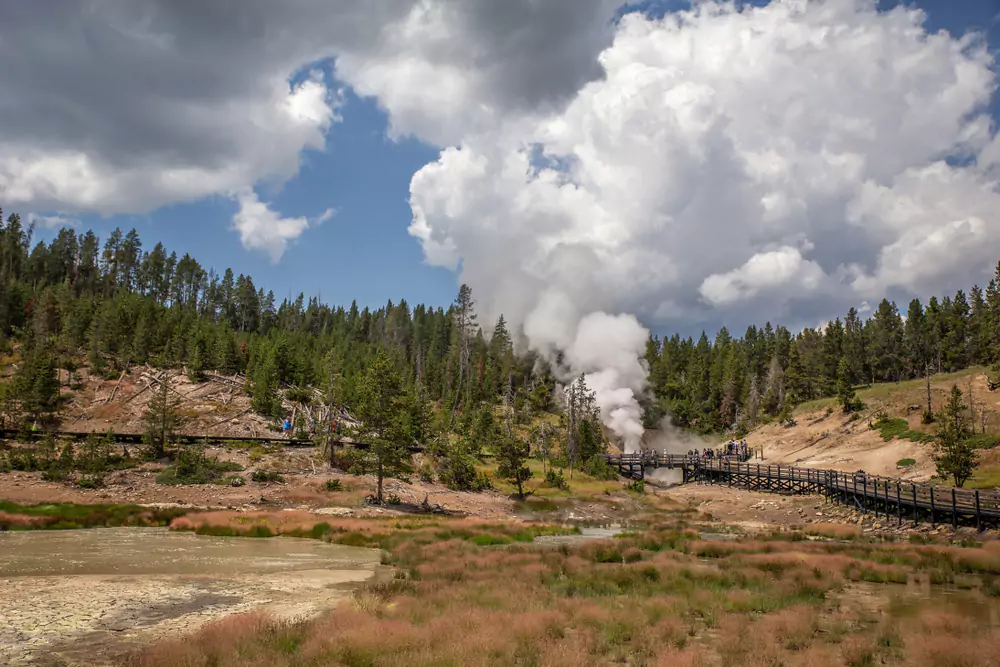
As the calendar flips to the warmer months between Memorial Day and Labor Day, Yellowstone transforms into a sun-soaked paradise. Summer in Yellowstone is synonymous with family vacations, idyllic hikes, and a bustling wildlife scene. But with the allure of the summer sun, comes a surge in visitor volume.
The Summer Sizzle
Yellowstone in the summer is a bit like a popular ice cream parlor on a hot day; packed to the brim, but oh-so-worth it. Families on vacation flock here in droves, making the park a lively hub of activity. Here’s what you can expect:
- Hot and dry: Summer sees daytime temperatures range between 70 to 80 degrees Fahrenheit. Don’t forget your sunscreen and plenty of water!
- Busy parks: With school out, families make a beeline for Yellowstone, resulting in crowded trails and scenic spots. If solitude is your thing, you might want to time your visit carefully.

Quiet(er) Moments
Even the busiest ice cream parlor has quiet moments, and so does Yellowstone. Early June and September, when schools reopen, see a dip in visitor volume. The park takes a deep breath, the trails become less crowded, and it’s almost like you have the place to yourself:
- Early June: A lovely time to visit when the summer rush hasn’t quite kicked in yet. Plus, enjoy the lingering spring wildflowers.
- September: As families return home and the leaves begin to turn, September offers a peaceful retreat for nature lovers.
Pro-tip: If you’re looking for a more tranquil experience, we suggest visiting in early September. You’ll enjoy the tail end of summer without the throngs of tourists.
Unforgettable Summer Moments
Despite the crowds, summer in Yellowstone is an experience not to be missed. Whether it’s watching Old Faithful erupt under a blue sky, hiking among vibrant wildflowers, or spotting a grizzly bear and her cubs—it’s the stuff memories are made of.
Remember folks, as the saying goes, “The early bird catches the worm.” So, rise with the sun, beat the crowds, and make the most of your summer adventure in Yellowstone. After all, a bit of hustle and bustle only adds to the flavor of your Yellowstone summer adventure, doesn’t it?
Stay tuned for the next season’s guide, where we will unwrap the colorful delights of autumn in Yellowstone. Until then, happy summer trails!
3. Autumn in Yellowstone
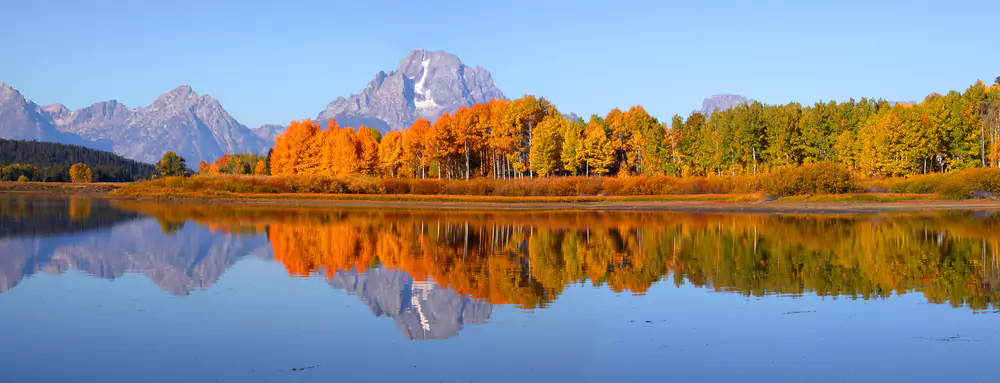
As the summer rush ebbs, and the kaleidoscopic palette of autumn begins to color Yellowstone’s landscape, a sense of serenity descends upon the park. The fiery hues of orange and yellow leaves create a breath-taking panorama that is, quite simply, out of a painter’s dream. Fall in Yellowstone is indeed like stepping into a living watercolor painting.
Scenic Transformation: A Symphony of Colors
Autumn in Yellowstone is synonymous with a spectacular display of color. As the temperature drops, the park’s flora responds with a visual symphony of golds, reds, and oranges. The aspen trees, in particular, put on a show that is nothing short of spectacular:
- Aspen Groves: These stunning trees, scattered throughout Yellowstone, turn a vibrant yellow and create a stark contrast against the evergreens. The Dunraven Pass is a prime location to enjoy this spectacle.
- Cottonwood Trees: Along the rivers and streams, Cottonwood trees add to the autumnal palette with their golden-yellow leaves.
Off-Peak Tourism: The Park (Almost) to Yourself
One of the best parts about visiting Yellowstone in the fall? The decrease in tourist traffic. While the summer is marked by bustling crowds, autumn offers a much more tranquil experience:
- Fewer crowds: The cooler temperatures and start of school mean fewer visitors, making it the perfect time for those seeking a quieter communion with nature.
- Road Closures and Weather: However, keep in mind that weather in Yellowstone can be unpredictable in the fall. Some roads may close early for winter preparation, and sudden snowfall can occur. Be sure to check the NPS website for the most current information.
Unforgettable Wildlife Moments

With the fall comes another unique spectacle in Yellowstone – elk rutting season, a must-see for wildlife enthusiasts.
- Elk Rutting: In September and early October, male elks engage in a competition for the attention of females, a behavior known as rutting. Their bugling calls echo through the park, adding to the unique ambiance of autumn in Yellowstone.
Pro-tip: For a chance to witness this phenomenon, head to the Mammoth Hot Springs area.
Autumn in Yellowstone is a season of vibrant colors and quieter moments, a time when nature puts on a mesmerizing show before the onset of winter. So, pack your layers, grab a pumpkin-spiced latte, and head out to experience the magical fall colors and fascinating wildlife behaviors of Yellowstone. Remember folks, as John Muir once said, “And into the forest I go, to lose my mind and find my soul.” And what better place to do that than in the heart of Yellowstone in the fall? Stay tuned for our guide to winter in Yellowstone, where we’ll explore the snow-laden beauty of this national treasure. Until then, happy autumn trails!
4. Winter in Yellowstone
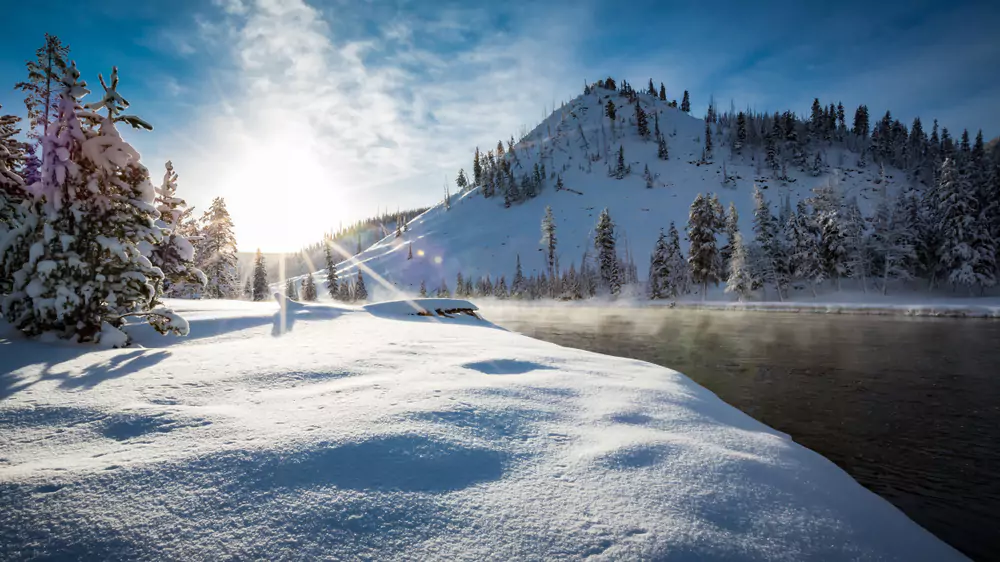
Winter in Yellowstone is a magical season, transforming the park into a frost-covered wonderland from late December to March. Picture this: you’re enveloped in a quiet so profound it’s almost tangible, broken only by the crunch of snow beneath your feet and the distant whistle of the wind. All around you, trees stand like silent sentinels, their branches heavy with fresh snow and sparkling in the winter sunlight. You might even spot a ghostly cloud of steam rising from thermal vents, creating dramatic wisps against the pale, blue sky. It’s a scene that could easily belong to a fairy tale.
Winter Activities: Embrace the Chill!

What’s winter without a bit of fun in the snow? Yellowstone has plenty to offer for the adventurous at heart:
- Cross-country skiing: Glide through Yellowstone’s winter landscapes, leaving a trail of ski tracks in your wake. For the best spots, check out the Tower Fall or Upper Geyser Basin trails.
- Ice-climbing: Strap on your crampons and challenge yourself with this exhilarating sport. It’s a thrilling way to experience the park’s frozen waterfalls up close. Make sure you’re accompanied by an experienced guide and check the park’s ice-climbing regulations.
- Snowshoeing and Snowmobiling: Traverse the snow-covered trails on snowshoes or zip through the park on a snowmobile. Yellowstone’s winter wilderness, here we come!
Remember, folks, there’s no such thing as bad weather, just bad clothes. So, layer up, grab your gear, and let’s make some snowy memories!
Exploring Yellowstone’s Snowy Basins and Frozen Waterfalls
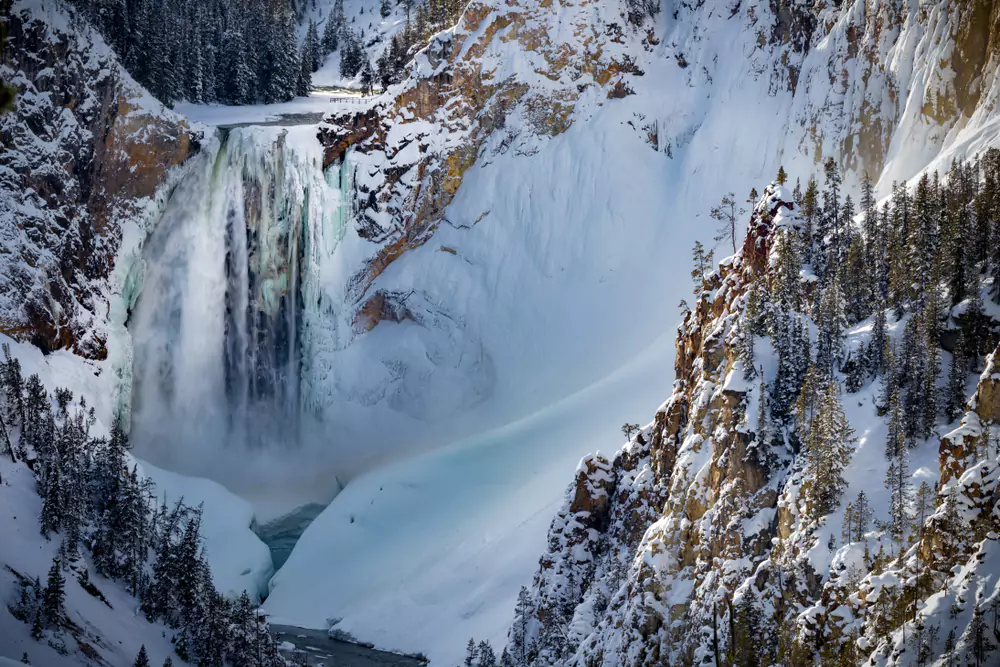
From snow-laden basins to ice-clad waterfalls, Yellowstone’s winter beauty is something to behold. Here’s a snippet of what you can look forward to:
- Snowy Basins: Imagine vast expanses of snow, pristine and undisturbed, glistening under the winter sun. Believe us when we say it’s a sight that will take your breath away.
- Frozen Waterfalls: There’s something eerily beautiful about a frozen waterfall, its cascading water suspended in time. Upper Falls and Gibbon Falls are particularly mesmerizing during winter.
Pro-tip: Don’t forget your camera! These are moments you’ll want to look back on.
As Mark Twain once whimsically said, “The coldest winter I ever spent was a summer in San Francisco.” Well, we’d like to gently counter that with, “The most magical winter you could ever spend is amidst the snow-laden landscapes of Yellowstone.” So, don’t let the cold deter you. Instead, bundle up, embrace the chill, and discover the enchanting beauty of Yellowstone in winter. Stay tuned for our Spring guide, where we’ll usher in the vibrant colors and new life that the season brings to Yellowstone. Until then, happy winter trails!
FAQ’s about Comprehensive Guide to Yellowstone
Q1.How many days are enough for Yellowstone?
A1. The ideal duration for visiting Yellowstone depends on your interests and the speed at which you like to travel. Generally, a minimum of three to four days is recommended to experience the major sights and activities in the park.
Q2.What month is best to visit Yellowstone?
A2. The best month to visit Yellowstone is often considered to be June, as the weather is fairly mild and all the park’s facilities and roads are typically open. However, each season offers its unique charms, so the “best” time can vary depending on what you want out of your visit.
Q3.What is the best way to tour Yellowstone?
A3. The best way to tour Yellowstone is by car, which allows you to travel at your own pace and explore off the beaten path. You can follow the Grand Loop Road, which takes you to the main attractions in the park. Hiring a guide or joining a tour can also be beneficial, particularly for first-time visitors.
Q4.Which city is closest to Yellowstone National Park?
A4. The city closest to Yellowstone National Park is West Yellowstone, Montana, which sits right at the park’s west entrance and provides easy access to the park.
Q5.What month is the cheapest to go to Yellowstone?
A5. The cheapest time to visit Yellowstone is during the off-peak months, typically late autumn (October and November) and early spring (April and May). During these times, crowds are fewer and accommodation rates are typically lower.
Final Thoughts
Yellowstone National Park is not just a destination; it’s an unfolding story of nature’s grandeur, a testament to the planet’s dynamic life story. It presents a world where geysers throw up plumes of steam as if the Earth itself is breathing, waterfalls freeze mid-cascade, caught in a dance between fluidity and stasis, and hundreds of species of organisms co-exist, painting a vibrant panorama of biodiversity.
The phrase “a picture is worth a thousand words” seems to fall short here. Yellowstone’s wonder cannot be limited to a thousand words or a thousand pictures. The glistening snow, the steamy breath of geysers, the rustle of wildlife—you need to be there, in the heart of it all, to truly grasp its beauty. It’s like a grand symphony where each element, from the towering trees to the modest mushrooms, plays a crucial note.
Visiting the park is like thumbing through the pages of an epic novel penned by Mother Nature, where each season is a new chapter with its unique narrative. So, whether you’re a thrill-seeker looking to kiss the icy winds while snowmobiling, a wildlife enthusiast waiting for that perfect grizzly bear shot, or a quiet seeker looking to lose yourself in the ethereal beauty of the frosted landscapes, Yellowstone promises an unforgettable experience. As we often say, “Don’t just visit Yellowstone—experience it, live it, and carry its stories back home with you.” Happy exploring, folks!
Conclusion
Immerse yourself in Yellowstone’s natural grandeur, a spectacle that transcends seasons. Each changing season, like a skilled artist, repaints the park in mesmerizing hues and brings forth a unique set of thrilling experiences. Spring breathes life into dormant trees, summer illuminates the vibrant landscapes, autumn showers the park in golden tones, and winter drapes it in a pristine, white blanket. Whether you’re marveling at the frozen waterfalls in winter or capturing the majesty of wildlife in the spring, each season serves up a delicious slice of adventure that’s hard to resist.
However, the key to unlocking the ultimate Yellowstone experience lies in aligning your personal preferences and desired activities with the season of your visit. Thrill-seekers might find winter’s icy embrace enticing for snowmobiling, while wildlife aficionados may prefer the lively spring and summer months. As the late, great Dr. Seuss once put it, “You have brains in your head. You have feet in your shoes. You can steer yourself any direction you choose.” The same holds for your Yellowstone adventure.
Striking the right balance between your interests and the seasonal offerings is like finding your rhythm in a thrilling dance with Mother Nature. So, pack your bags, tie those laces tight, and set your compass towards Yellowstone. Let this natural wonderland be your playground, your muse, and your sanctuary. And remember, every visit to Yellowstone is like turning the pages of a beautifully penned novel by Mother Nature, where each season is a distinct, captivating chapter. So, whether you choose the winter’s hush or the summer’s bustle, remember to soak in every moment, every sight, and every experience. After all, in Yellowstone, every trail has a tale, and every journey, a story.
